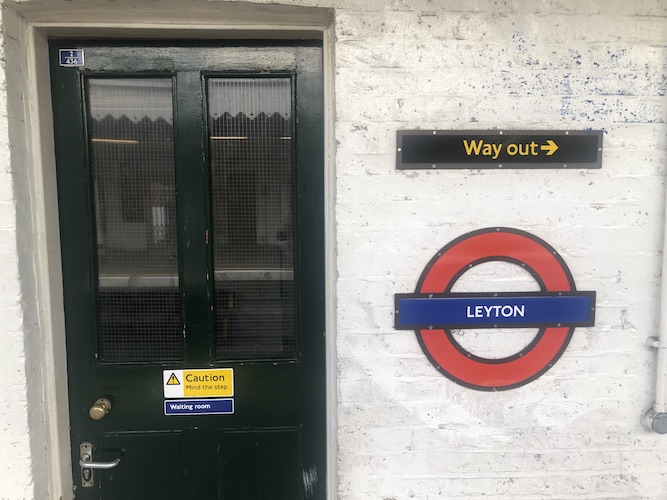Amid the flurry of Whitehall announcements this month, you would be forgiven for missing the launch of a four-week consultation on a Transport for London request to renew the Central line’s exemption from certain requirements of the Rail Vehicle Accessibility (Non-Interoperable Rail System) Regulations 2010. Behind what sounds like a simple bit of red tape is a story of not just the travails of that line but of TfL itself over a period of two decades and of relevance to last week’s Spending Review announcements too.
The regulations set out detailed accessibility requirements for passenger rail vehicles, including the Underground. For the Central line fleet, the issues include flooring, handrail positioning, public address systems, displays, wheelchair spaces and the height of priority seats.
The big problem for the 85 Central line trains in meeting these requirements is their age. Now 33 years old, they were designed well before the current regulations came into force. Compliance, says TfL, is neither “technically feasible or economic”. That means the fleet, which is the network’s second busiest, is also its least accessible. That’s not its only issue. It’s also the most unreliable, mainly due to its effectively obsolete motors and electronic systems, as regular users know only too well. Reduced timetables have been in place for two years.
All this might have been fixed already, but plans to replace the fleet were shelved after the collapse in the mid to late 2000’s of the controversial Public Private Partnership arrangements, initially set up by the last Labour government to modernise the creaking network. The replacement process due to start in 2015 was “re-sequenced” and subsequent reductions in government operating grant and forecast revenues meant there was only enough money to replace the Piccadilly fleet, which is 20 years older.
For the Central, the answer was to instead refurbish the existing trains – to effectively “make do and mend”, albeit at a cost of £500 million. The programme began in 2018 and was expected to be finished last year. That didn’t happen, of course. Progress was disrupted by Covid and its aftermath, the economic impacts of the Ukraine-Russia and Middle Eastern conflicts, and slower than expected post-pandemic fare income recovery. The continuing deterioration of the wider fleet also caused delays, with engineers diverted to deal with problems on other lines as well as the Central line motor failures.
It’s not an easy job, either. In fact, TfL boss Andy Lord told his board last week that it’s the “most comprehensive, the most technically difficult and the biggest train upgrade ever undertaken in the UK”. The trains are being stripped down to their frames, with “every other part either replaced or improved”, board papers reported. More than 30 UK manufacturers are supplying parts, with more than 125 fitters working on the programme at TfL’s Acton depot.
Two refurbished trains are back in service and performing well, with three more coming later this year. The programme, which TfL says is “fully resourced”, will gather speed in 2026, with the whole fleet upgraded by the end of 2029, Lord said. The exemption application itself, needed because the current one expires this year, hedges its bets, suggesting completion in 2031/32. In the meantime, information and help for disabled passengers from station staff will continue to be available.
The Central line is not alone in facing the problems of old age. Earlier this year, passenger watchdog London TravelWatch warned of “similar problems elsewhere in the near future”, particularly with the Bakerloo line fleet, introduced in 1972 and now the oldest trains in daily passenger service anywhere in the UK.
Is there light at the end of those deep line tunnels, and for the network as a whole, following the spending review announcement of a four-year £2.2 billion capital funding settlement for TfL? It’s certainly good news, allowing the network to complete both the long-awaited £1.5 billion replacement of the Piccadilly line fleet by 2027 and the replacement next year of the aging Docklands Light Railway fleet, according to Lord. Procurement of new trams for south London can also go ahead.
There’s less certainty for other lines, though, with TfL saying only that the settlement will allow it to “progress discussions on new Bakerloo line trains”, though its separate announcement to investors does say the settlement will support “rolling stock upgrades” on the Bakerloo and Central lines.
TfL has a time-limited option to extend the Piccadilly line contract, understood to expire at the end of next year, to include more fleet replacements. The Bakerloo line fleet is top of the list, albeit subject to funding not currently forthcoming. For Central line users then, the current programme, extending the life of the old fleet by 12 years, seems to be the way forward.
And TfL continues to face other pressures across the aging network, including the need to plan for replacing the Jubilee and Northern line trains, both of which were introduced in the mid-1990s. As Lord said after the spending review announcement, the “prevailing macro-economic conditions and other factors mean that we will continue to have to make at times difficult decisions and we will need to continue to carefully prioritise investment and control our costs.”
OnLondon.co.uk provides unique coverage of the capital’s politics, development and culture with no paywall and no ads. The vast majority of its income comes from individual supporters, who pay £5 a month or £50 a year. They receive in return bespoke newsletters, bargain London event offers and much gratitude. Details HERE. Follow Charles Wright on Bluesky.
